
How to Use 12VDC LEAD ACID BATTERY: Examples, Pinouts, and Specs
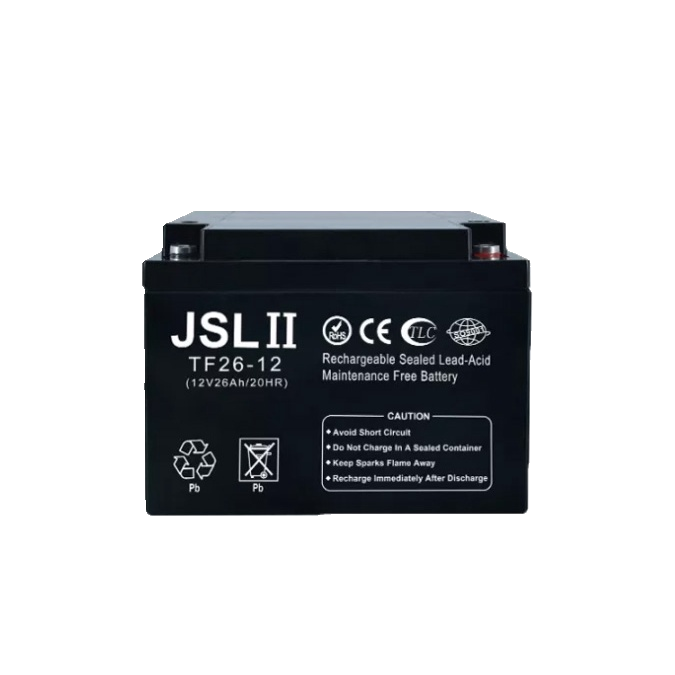
 Design with 12VDC LEAD ACID BATTERY in Cirkit Designer
Design with 12VDC LEAD ACID BATTERY in Cirkit DesignerIntroduction
The 12VDC Lead Acid Battery is a rechargeable energy storage device that provides a nominal voltage of 12 volts. It is widely recognized for its reliability, durability, and ability to deliver high current, making it suitable for a variety of applications. This type of battery is commonly used in automotive systems, uninterruptible power supplies (UPS), emergency lighting, and renewable energy systems such as solar power setups. Its robust design and ability to handle deep discharge cycles make it a popular choice for both industrial and consumer applications.
Explore Projects Built with 12VDC LEAD ACID BATTERY
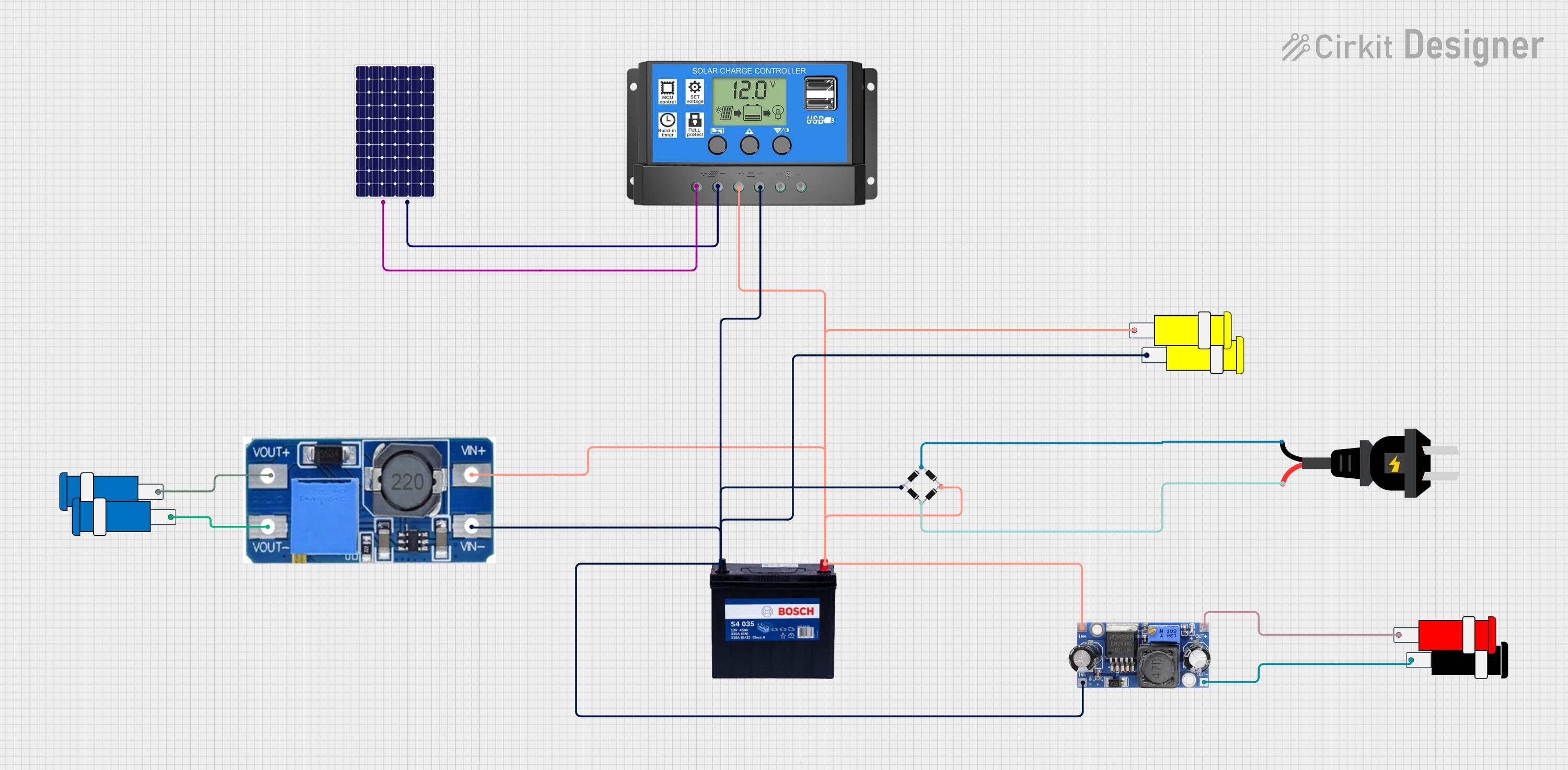
 Open Project in Cirkit Designer
Open Project in Cirkit Designer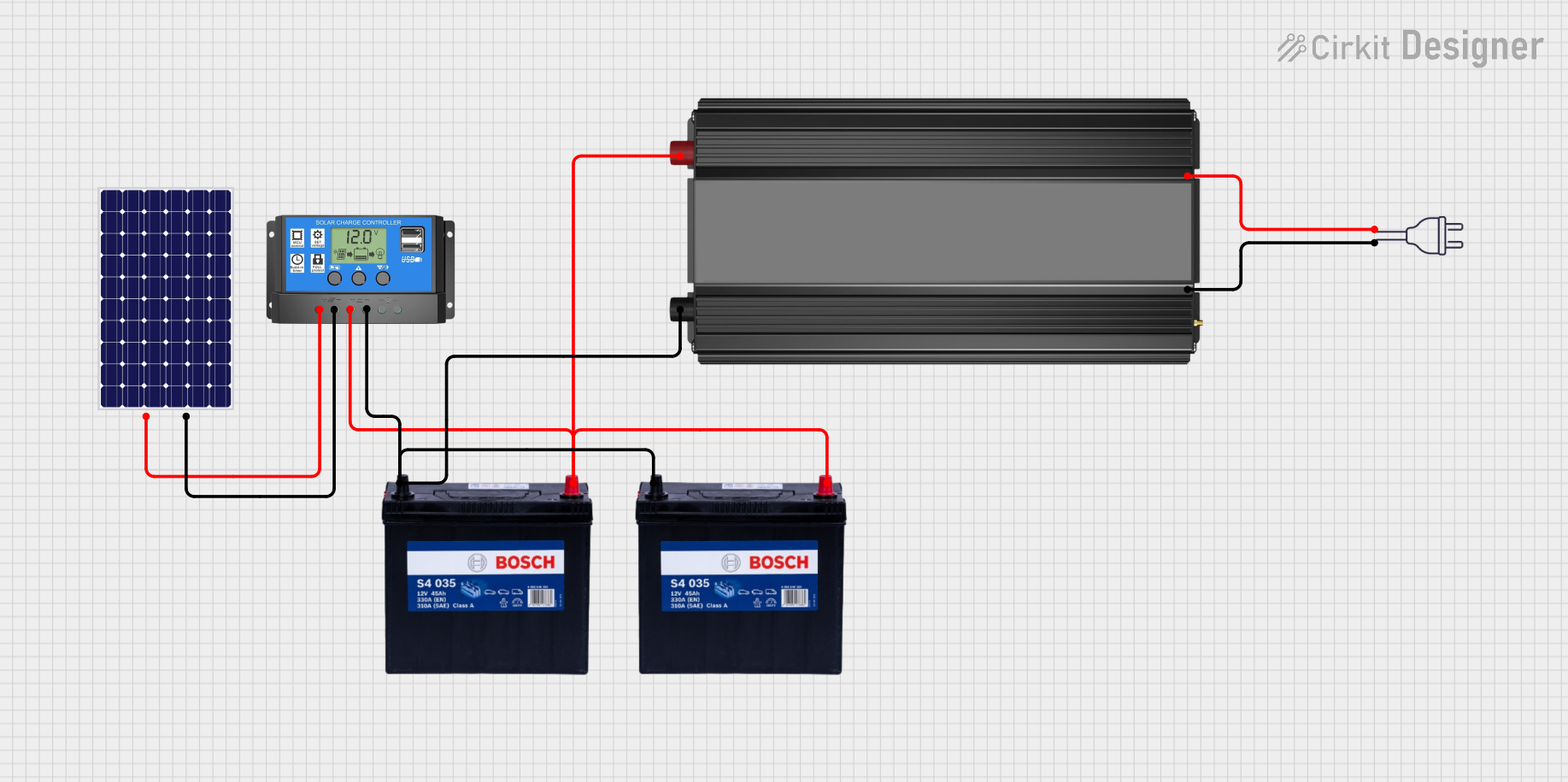
 Open Project in Cirkit Designer
Open Project in Cirkit Designer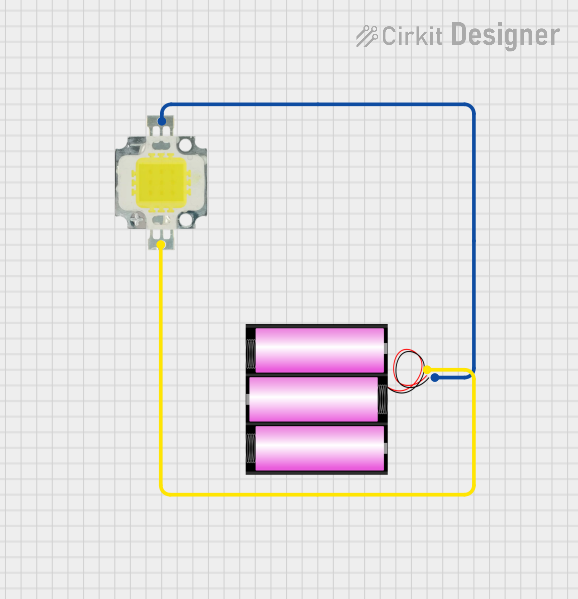
 Open Project in Cirkit Designer
Open Project in Cirkit Designer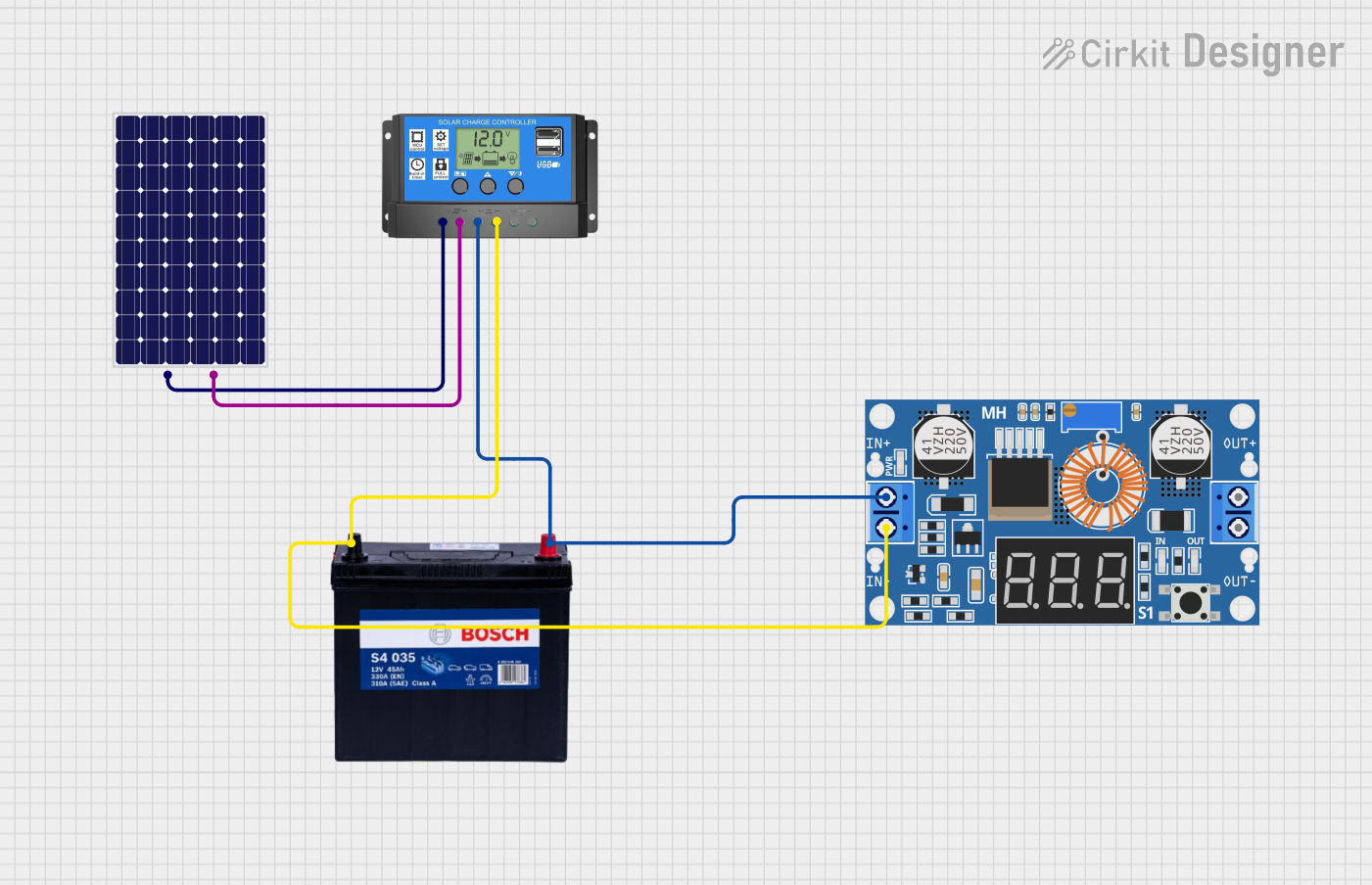
 Open Project in Cirkit Designer
Open Project in Cirkit DesignerExplore Projects Built with 12VDC LEAD ACID BATTERY

 Open Project in Cirkit Designer
Open Project in Cirkit Designer
 Open Project in Cirkit Designer
Open Project in Cirkit Designer
 Open Project in Cirkit Designer
Open Project in Cirkit Designer
 Open Project in Cirkit Designer
Open Project in Cirkit DesignerTechnical Specifications
Below are the key technical details of a typical 12VDC Lead Acid Battery. Note that specific values may vary depending on the manufacturer and model.
General Specifications
| Parameter | Value |
|---|---|
| Nominal Voltage | 12V |
| Capacity Range | 1.2Ah to 200Ah (varies by model) |
| Chemistry | Lead-Acid |
| Charge Voltage (Float) | 13.5V to 13.8V |
| Charge Voltage (Boost) | 14.4V to 14.7V |
| Discharge Cutoff Voltage | 10.5V |
| Maximum Discharge Current | Varies (e.g., 10A to 1000A) |
| Operating Temperature | -20°C to 50°C |
| Cycle Life | 200 to 1000 cycles (depending on depth of discharge) |
Pin Configuration and Terminals
The 12VDC Lead Acid Battery typically has two terminals:
| Terminal | Description |
|---|---|
| Positive (+) | Connects to the positive side of the circuit. Usually marked in red. |
| Negative (-) | Connects to the negative side of the circuit. Usually marked in black. |
Usage Instructions
How to Use the Component in a Circuit
Connecting the Battery:
- Identify the positive (+) and negative (-) terminals of the battery.
- Use appropriately rated wires to connect the battery to your circuit.
- Ensure the polarity is correct to avoid damage to the battery or connected devices.
Charging the Battery:
- Use a compatible lead-acid battery charger with the correct voltage and current ratings.
- Set the charger to the appropriate mode (float or boost) based on the battery's state of charge.
- Avoid overcharging by using a charger with automatic cutoff or monitoring the voltage manually.
Discharging the Battery:
- Ensure the load connected to the battery does not exceed its maximum discharge current.
- Monitor the battery voltage and avoid discharging below the cutoff voltage (10.5V) to prevent damage.
Safety Precautions:
- Always handle the battery with care to avoid short circuits.
- Do not expose the battery to fire, heat, or water.
- Use proper ventilation when charging to prevent the buildup of hydrogen gas.
Important Considerations and Best Practices
- Depth of Discharge (DoD): Avoid deep discharges to extend the battery's lifespan. A typical recommendation is to discharge only up to 50% of the battery's capacity.
- Temperature Management: Operate the battery within the specified temperature range to prevent performance degradation.
- Storage: Store the battery in a cool, dry place and recharge it periodically if not in use to prevent sulfation.
- Wiring: Use wires with sufficient gauge to handle the current without overheating.
Example: Connecting to an Arduino UNO
The 12VDC Lead Acid Battery can be used to power an Arduino UNO via a voltage regulator or a DC-DC converter to step down the voltage to 5V. Below is an example circuit and code to read the battery voltage using the Arduino's analog input.
Circuit Setup
- Connect the positive terminal of the battery to the input of a DC-DC converter.
- Set the DC-DC converter to output 5V and connect it to the Arduino's 5V pin.
- Use a voltage divider circuit (e.g., 10kΩ and 2.2kΩ resistors) to step down the battery voltage for measurement.
- Connect the voltage divider output to an analog pin (e.g., A0) on the Arduino.
Arduino Code
// Define the analog pin connected to the voltage divider
const int voltagePin = A0;
// Define the voltage divider ratio (e.g., 10kΩ and 2.2kΩ resistors)
// Adjust the ratio based on your resistor values
const float voltageDividerRatio = 5.545;
void setup() {
Serial.begin(9600); // Initialize serial communication
}
void loop() {
int analogValue = analogRead(voltagePin); // Read the analog input
float batteryVoltage = (analogValue * 5.0 / 1023.0) * voltageDividerRatio;
// Print the battery voltage to the Serial Monitor
Serial.print("Battery Voltage: ");
Serial.print(batteryVoltage);
Serial.println(" V");
delay(1000); // Wait for 1 second before the next reading
}
Troubleshooting and FAQs
Common Issues and Solutions
Battery Not Charging:
- Cause: Faulty charger or incorrect charging voltage.
- Solution: Verify the charger is functioning correctly and set to the appropriate voltage.
Battery Drains Quickly:
- Cause: Excessive load or aging battery.
- Solution: Reduce the load or replace the battery if it has reached the end of its life.
Overheating During Use:
- Cause: High discharge current or poor ventilation.
- Solution: Ensure the load is within the battery's rated current and improve ventilation.
Low Voltage Output:
- Cause: Deep discharge or sulfation.
- Solution: Recharge the battery immediately or perform a desulfation process if possible.
FAQs
Q1: Can I use a 12VDC Lead Acid Battery indoors?
A1: Yes, but ensure proper ventilation during charging to prevent hydrogen gas buildup.
Q2: How do I know when the battery is fully charged?
A2: A fully charged lead-acid battery typically reaches a voltage of 13.5V to 13.8V in float mode.
Q3: Can I connect multiple batteries together?
A3: Yes, you can connect batteries in series to increase voltage or in parallel to increase capacity. Ensure all batteries are of the same type and capacity.
Q4: How long does a 12VDC Lead Acid Battery last?
A4: The lifespan depends on usage and maintenance but typically ranges from 3 to 5 years.